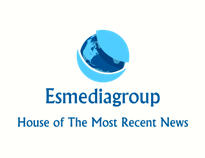Successful operational audit preparation hinges on three critical elements: documentation readiness, team alignment, and process transparency. Organizations that invest in comprehensive preparation typically reduce audit duration by 40% while minimizing disruptions to daily operations.
Building on this foundation, the first step involves establishing robust communication protocols that will support your team throughout the entire audit cycle.
Establish clear communication channels
Designate a single point of contact for all audit-related communications. This individual coordinates between auditors and department heads, ensuring consistent information flow while maintaining a centralized communication log and scheduling regular briefings throughout the process.
To complement this centralized approach, create dedicated communication channels using existing platforms like Slack or Microsoft Teams. These channels facilitate real-time updates and prevent information silos that commonly derail an operational audit process.
With communication frameworks in place, your attention can then shift to the documentation requirements that form the backbone of any successful audit.
Document current processes thoroughly
Map existing workflows before auditors arrive. Visual process documentation reveals gaps that might otherwise create complications during the audit. Use flowcharts and standard operating procedures to illustrate how tasks move through your organization, as this clarity becomes invaluable when auditors begin their detailed examination.
Furthermore, compile financial records, compliance certificates, and performance metrics into organized digital folders. Auditors require immediate access to these materials, and delays often extend the audit timeline unnecessarily. This preparation becomes even more critical when considering soc 2 audit frequency requirements that many organizations must navigate.
Once documentation is properly organized, the next priority involves preparing your human resources for the intensive interaction period ahead.
Train key personnel on audit procedures
Conduct mock interviews with employees who will interact directly with auditors. Practice sessions reduce anxiety and improve response quality while focusing participants on providing factual answers rather than interpretations or opinions about processes.
Building on this preparation, educate team members about confidentiality requirements and professional conduct expectations. Clear guidelines prevent misunderstandings that could compromise the audit’s integrity, particularly during sensitive discussions about operational procedures.
While human preparation is essential, the physical environment where the audit takes place requires equal attention to detail.
Prepare physical and digital workspaces
Allocate quiet, private areas where auditors can conduct interviews and review sensitive documents. These spaces should include necessary technology and office supplies, creating an environment conducive to thorough examination without interruptions.
Simultaneously, ensure IT systems can accommodate additional users without compromising security protocols. Test access permissions and backup procedures before the audit begins, as technical difficulties can significantly delay progress and create unnecessary stress for all parties involved.
Drawing from past experiences provides valuable context that can enhance your current preparation efforts.
Review historical audit findings
Examine previous audit reports to identify recurring issues or recommendations. Address outstanding items proactively to demonstrate continuous improvement efforts, as this preparation signals organizational maturity to incoming auditors.
Moreover, create action plans for implementing past recommendations while documenting progress made since the last audit. This information supports your organization’s commitment to operational excellence and provides concrete evidence of systematic improvement initiatives.
Effective preparation requires realistic expectations about time requirements and resource allocation.
Establish realistic timelines
Develop detailed schedules that account for normal business operations alongside audit activities. Buffer time for unexpected requests or document retrieval delays, recognizing that audits rarely proceed exactly as initially planned.
Additionally, communicate availability constraints upfront by informing auditors about critical business periods or key personnel travel schedules that might affect the operational audit process. This transparency helps establish mutual respect and realistic expectations from the outset.
The final element of comprehensive preparation involves implementing safeguards that maintain quality throughout the audit period.
Implement quality control measures
Assign internal reviewers to verify document accuracy before submission. Inaccurate information creates unnecessary follow-up work and potentially damages credibility with audit teams who depend on reliable data for their assessments.
Concurrently, establish backup personnel for critical roles so that if primary contacts become unavailable, designated alternates can maintain audit momentum without sacrificing quality or completeness.
The operational audit process becomes significantly more manageable when teams invest adequate time in preparation. Well-prepared organizations often discover valuable insights about their operations while demonstrating their commitment to transparency and continuous improvement, transforming what could be a stressful experience into an opportunity for organizational growth.
Related Posts
You may also like
-
ATM Excite: Pioneering the Next Era of Air Traffic Management
-
Francisco D’Agostino, brother-in-law of Luis Alfonso de Borbón, delisted by U.S. Treasury after investigation
-
Mailrelay: La Plataforma Definitiva para Potenciar tu Email Marketing
-
Looking for audiovisual solutions for events? Discover what Edgar Vásquez has to offer
-
How High Should Pool Water Be?

